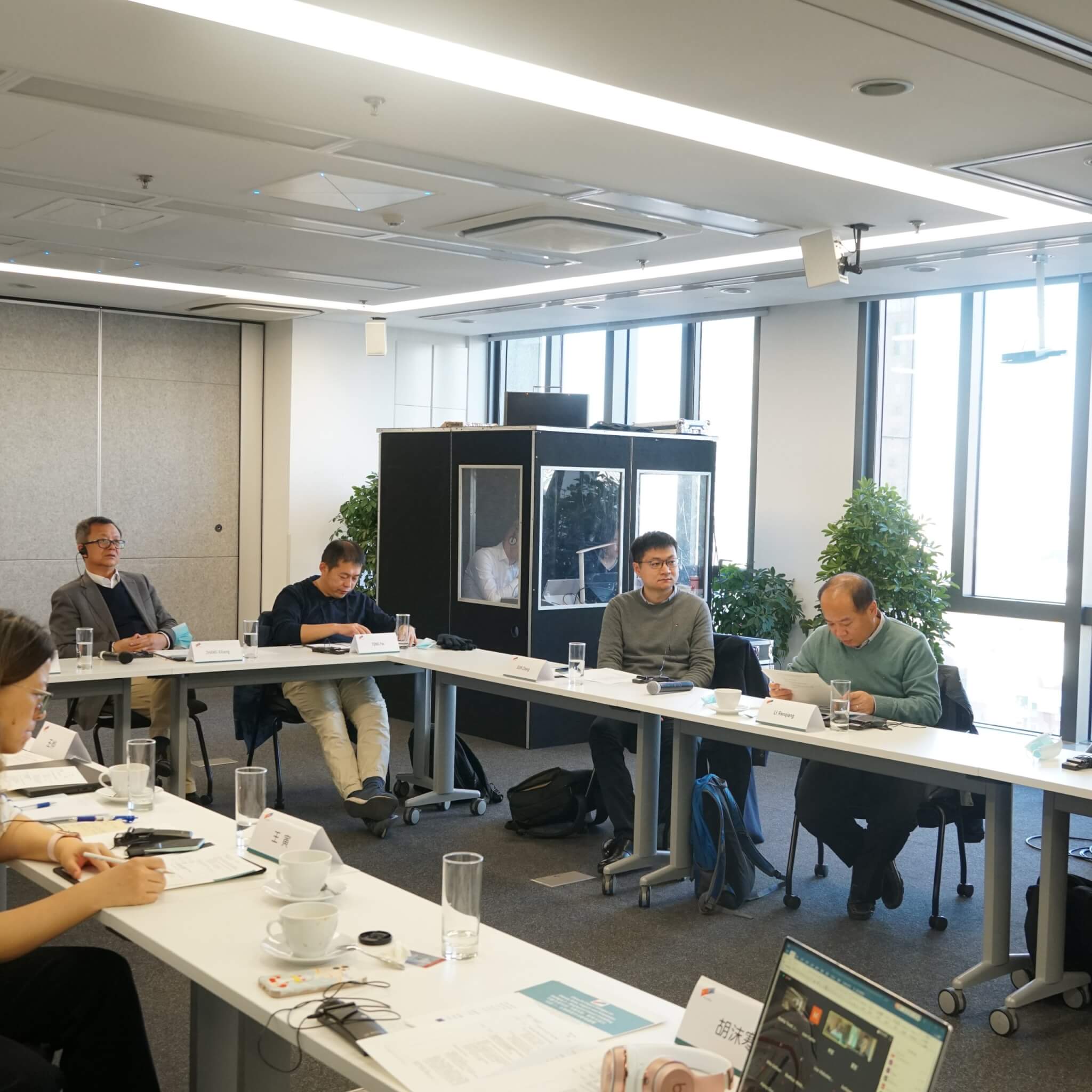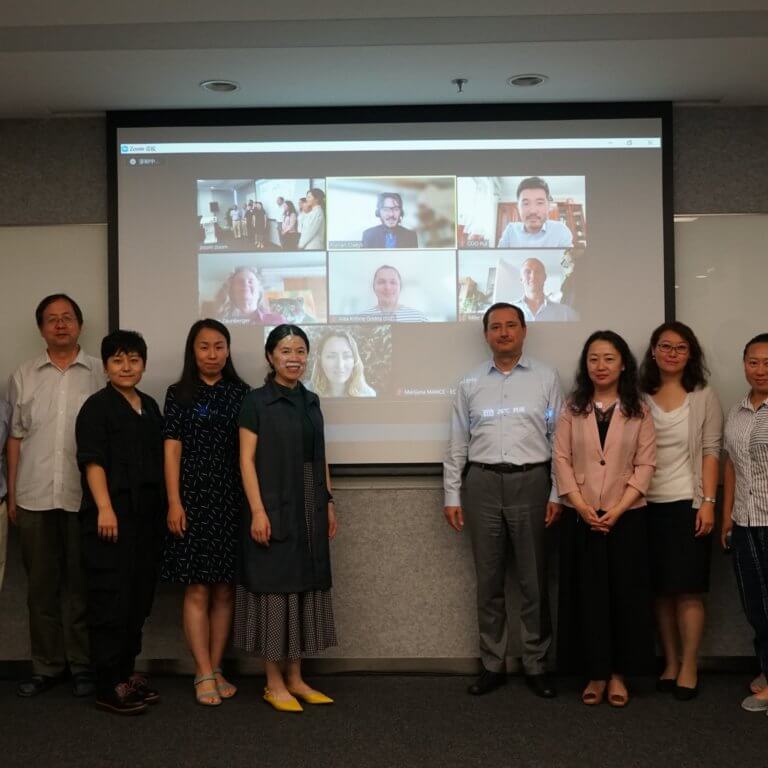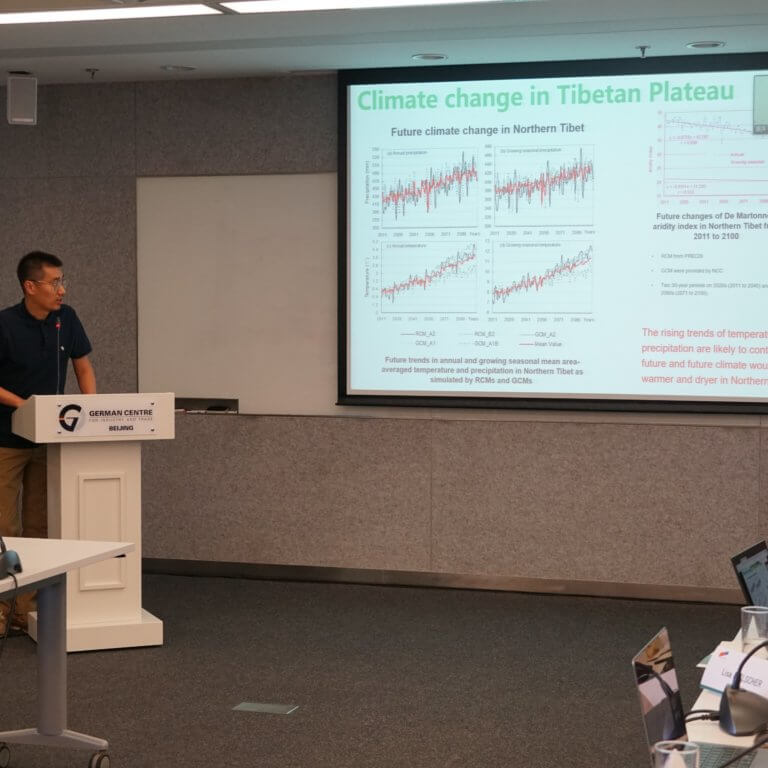
Photo Credit: GIZ
On December 2, 2020 the Strategic Partnerships for the Implementation of the Paris Agreement (SPIPA) Project held an Expert Dialogue on “Climate Risks, Impacts and Adaptation – Biophysical Impact Modelling” in Beijing. This Expert Dialogue was the second in a series of workshops along the themes of “Climate Risks, Impacts and Adaptation” taking place until the first quarter of next year. The workshop was held as a hybrid event with the participation of Joint Research Center (JRC) experts from Europe and Chinese experts from Tsinghua University and other universities and think tanks. The workshop focused on two dimensions, on agriculture and ecosystems impacts and on river floods and wildfire danger impacts.
Biophysical impact modelling is a topic that has not yet been fully explored jointly by representatives of the European Union and China, and therefore during the event hopes that the discussions would not only be informative and useful but also feed into the preparation of the UNFCCC Conference of Parties in Glasgow next year were formulated.

The experts during the workshop Photo Credit: GIZ
The first session started with a presentation from a European Expert from the JRC on Impacts on Agriculture in Europe. Agriculture in Europe is a massive and vital industry, employing over 20 million people on over 10 million farms, most of which are still family-owned and operated. As such, climate has drastic effects on the livelihoods of tens of millions of people and the food supply of hundreds of millions. JRC employs a modelling framework called ECroPS, a process which takes climate model simulations and combines them with crop growth models and a bias correction. The process can estimate the impacts climate change will have on different kinds of crops under different warming scenarios. For example, warming will have different impacts on maize than it will have on wheat, and under an extreme climate scenario (more than 3C warming), maize may no longer be a viable crop at all in Europe. The model also allows for exploring adaptation options, for example mixing crop varieties to make them more resilient to climate change. The second presentation from a JRC expert displayed the topic of alpine tundra habitat loss. The Alpine Tundra, despite its name, consists of the areas above the tree line in the Alps, Pyrenees, and Scandes mountain ranges, 53 percent of which is formally under the protection of the Natura 2000 network of the European Union. The Alpine Tundra is an important reservoir of freshwater sources and an extremely important area of biodiversity in Europe. The Regional Climate Model was introduced. This model is used for simulating different warming levels at different points in the future. The Chinese expert from the Chinese Academy of Sciences introduced the threat of climate change to biodiversity conversation in China in the 21st century. Climate Change in particular has an extremely complicated impact on biodiversity, and therefore it is difficult to come up with reliable forecasting and predictions. Along the example of the Giant Panda the relationship between climate change and biodiversity was illustrated. Using abiotic (climate and geography) and biotic (bamboo) variables, modelling projects that pandas will suffer tremendously under all realistic warming scenarios, mostly due to the disruption climate change will have on bamboo dispersion.

Photo Credit: GIZ
During the second session “River Floods and Wildfire Danger Impacts” presented the first European experts from JRC river flood impacts and adaptation in Europe, explaining that river flooding, one of the most impactful natural disaster types in Europe, is causing billions of euros in damages annually throughout the EU. Furthermore, the model used in Europe for flood projections and damage predictions, which is called Lisflood was introduced. The second European expert from JRC presented to the audience wildfire danger and vulnerability in Europe. Forest fires in Europe have been increasing in number and intensity in recent years, particularly in the Mediterranean part of the continent. Forest fires are not easy to model because there are many variabilities, but in general fires are linked to precipitation and the moisture of vegetation fuel. Temperature, drought stress, and wind are also other variables. Lastly, human activity, a decidedly unpredictable variable, is extremely important given that most forest fires in Europe are started by humans, whether deliberately or accidentally. A Chinese expert from Hubei University of Economics presented an assessment with scenarios in Wuhan, Hubei Province, of urban waterlogging and its indirect risk at the local scale. The city of Wuhan, having a considerable amount of low-lying areas, is particularly vulnerable to waterlogging. The direct risk assessment found that climate change, again under the three scenarios of a temperature rises of 1.5°C, 2°C, and 3°C, will increase flooding, making severe flood events like the one in 2016, a particularly intense rain season, much more frequent, and therefore economic costs associated with such events will also become more commonplace.
The third expert dialog will take place in January 2021.



